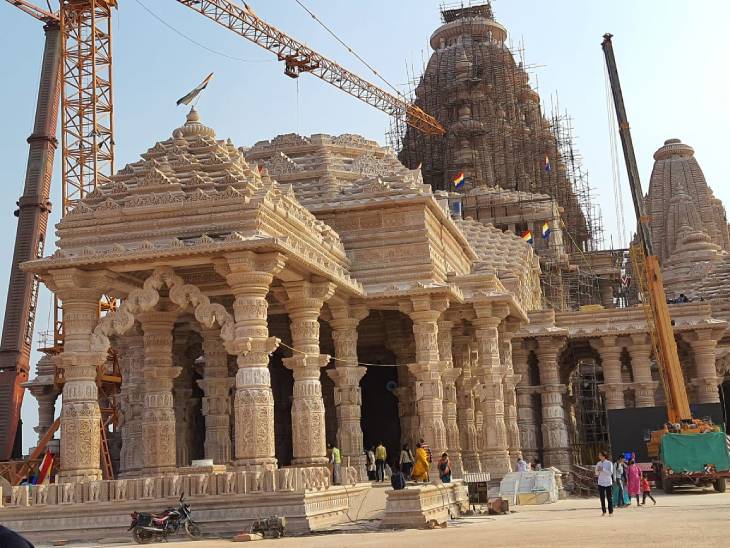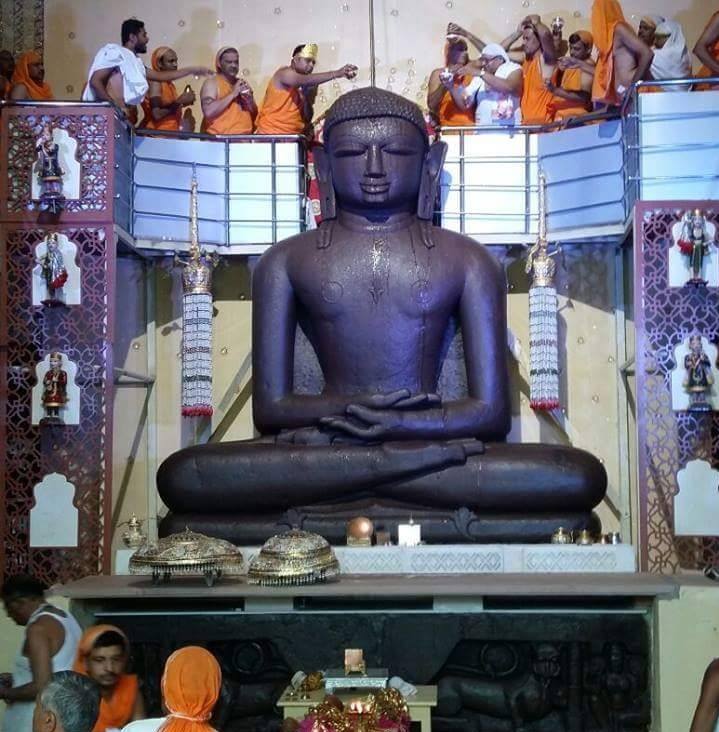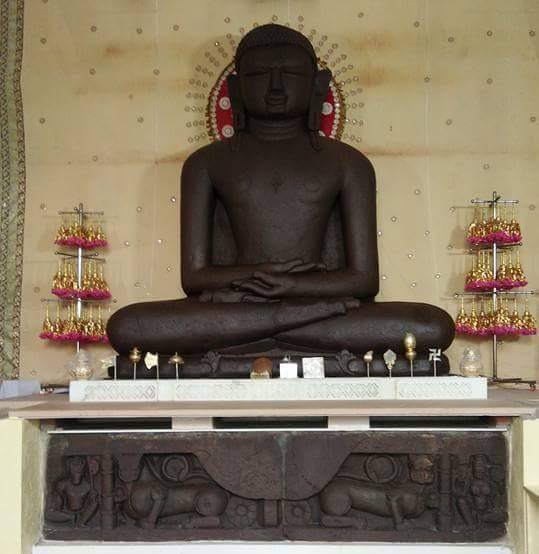The story of discovery of Bade Baba's statue is quite interesting. It was the last years of the seventeenth century. Bhattaraka of Digambar Jain tradition Shri Surendra Kirti had been traveling with his disciples for many days. He was fasting, not for food, but for the sake of seeing God, so that if he found a temple somewhere, where the Tirthankar idol was enshrined, then the hunger of the mind would be quenched and he would get the necessary fuel to run this body. He was also thirsty but there was a thirst in his eyes to capture the beautiful image of a Jain statue in his eyes. He had adopted the rule of not taking food without seeing God. While travelling, one day he came to Hindoria village near Damoh and stayed with his friends. The villagers of Hindoria were feeling blessed but there was a pain in everyone's heart. Due to not having Devdarshan for many days, he had not taken food, this news had spread to every house of the village and there was no temple anywhere in the vicinity. How will it be possible to feed Bhattarakji? The emotional listeners were worried. He gave his sermon. Jain devotees laid out squares for their food. After the morning sermon, he went out to the village. Many devotees requested Bhattarakji to take food but he did not accept anyone's invitation.
Suddenly someone got divine inspiration. He suggested that a statue is visible on a distant hill, only its torso and head are visible. Its remaining part is buried in stones. That idol looks like that of Tirthankara. Have darshan of him. Munishree's face blossomed with joy. The desire to see God's personal form became intense.
21 km in Hindoria village and Kundalpur area. Is the distance. At that time, it is not difficult to estimate how long and how far the inaccessible forest path filled with bushes was, but when have Jain monks, who cover vast distances in a day, been afraid of it? Covering a distance of miles in just one day, they reached the foothills of the mountain at a fast pace before sunset.
Climbing the hill was not easy. The thought that he would be able to see God in the morning was thrilling him. Although God was always with them, direct physical darshan was necessary. As soon as dawn broke, they started towards that hill. Making our way through the bushes on a remote path, to reach the summit. He could not even remember when he reached the peak, remembering the Lord in his mind.
When he looked up, he saw that a grand and beautiful divine image was right in front of him. Adi Tirthankar's calm, unperturbed and gentle posture captivated him. They kept staring at him. The eyelids closed automatically, to cherish that image in the mind. The desire to see God was fulfilled. My heart became happy. Acharya praised the Lord. The Sangh offered prayers. The villagers who came along were blessed by worshiping. After the Archana, when I looked around, I saw that many decorated stone blocks and circumambulations along with the eight Pratiharya (Chhatra, Chanwar, Pratihari, Prabhamandal, Chauridharini, Gaj, Padpeeth etc.) Tirthankar idols were scattered here and there. He thought that there must be a huge temple commensurate with the grandeur of this statue. Affected by the cruel blows of time, those ruined remains were telling the story of the glory of their past.
His eyes were satisfied after seeing him. Now we could go for food. Came back to come again. The villagers were happy as they had achieved two things. The feeling that Devdarshan had taken place and that our revered sage would be able to take food was making the devotees happy. Bhattarakji's resolution was fulfilled and the feelings of the devotees came true. He took food.
But now that vitaraagi image had entered his entire consciousness. He resolved something in his mind. When the debris was gradually removed with the help of the villagers, Acharya became grateful in his heart to the anonymous craftsman who, despite being so skilled, was indifferent to name and fame. The unique Takshak of the red sandstone statue, made by joining two stones and sitting on a throne two cubits high, which is one of its kind in India, had not even left his name anywhere. At that auspicious time, Bhattarakji was naturally inspired to renovate this temple. If this unique idol is again placed on the altar in the Agamokta method, then the entire surrounding area will become sacred. He announced his resolution.
His disciple Suchi (Kirti) or Suchandra (name is unclear in the record) sought permission to gather support for this and the work of restoration started. Bhattarakji resolved to celebrate Chaturmas there. As soon as the work had started, Suchandkirtiji's mortal body merged into the five elements. Then his saintly colleague Brahmachari Nemisagarji took upon himself the responsibility of completing this incomplete work. By divine will, Maharaj Chhatrasal, the brave and son of King Champat Rai and Queen Sarandha, left his capital Panna and came to Kundalpur while roaming here and there. He also saw this amazing statue.
On meeting Brahmachari Nemi Sagar, he requested Bhattarakji's resolution for renovation in front of Maharaj Chhatrasal. Maharaj himself was roaming around as a beggar at that time. Chhatrasal, who had a big and generous heart, still did not reject Brahmachariji's words. Although forced by circumstances, he could only promise that if I get my kingdom back, I will get the temple renovated from the treasury.
It was extraordinary or Chhatrasal's virtue or his military strength was useful or it was God's grace. But very soon he was reinstated on the throne of Panna. He remembered his word.







